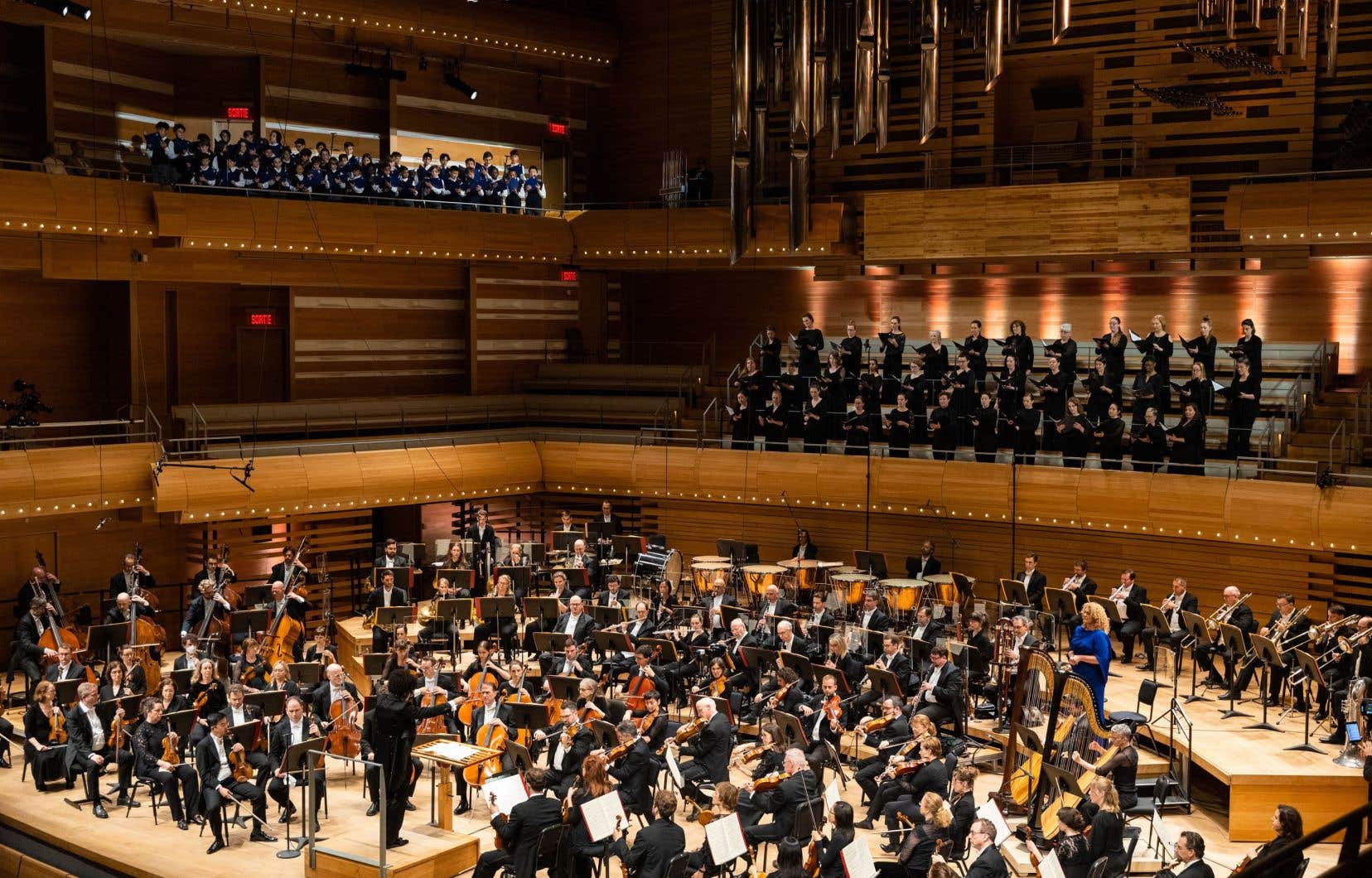Rafael Payare and the OSM are putting an end to their first joint season these days. It ends as it began: with a grand interpretation of a symphony by Mahler, this time the Third.
“Payare presents an opportunity to reconnect with what could be called the ‘Zubin moment’, an allusion to that day in 1960 when the very young Zubin Mehta came to lead the OSM before becoming its musical director. Everything in the international history of the OSM started from there. The “Zubin moment” is visceral and not reasoned. Where would this new trigger lead? This is what we wrote on July 29, 2019 after the 2e Rafael Payare’s test concert, 18 months before his appointment as head of the OSM, when he was just a outsider among the candidates.
At the end of the first season, we have the impression of experiencing exactly that: a mutual blossoming which can lead who knows where, but certainly to other shores than those we have frequented for 15 years. Very ironically, we had in our score the notes of the concert by Zubin Mehta, conductor emeritus of the OSM, in this Third by Mahler in 2015 and the timing of the titanic 1er movement overlaps almost to the second with that of Payare.
Before coming to Mahler, it should be noted that this series of concerts marks the retirement of six musicians: Chantale Boivin, Marie Doré, Sophie Dugas, Karen Baskin, David Quinn and the name we so feared to see one day on such a list, Theodore Baskin. In a sound corpus, each member, of course, is important. The fact remains that certain characters are true “DNA markers” of an orchestra’s identity.
For 43 years, oboist Theodore Baskin was this DNA marker at the OSM. Not the only one, but one of the main, most emblematic. There 3e Symphony of Mahler gave him the honor of opening the 2e part of the work. Madeleine Careau, director of the OSM, who we thought came to the microphone to tell us about the trauma of this musical loss, in fact paid tribute to the patron Barbara Bronfman to whom this concert was dedicated. A bequest from him will ensure the sustainability of the OSM Competition. It’s very remarkable, too.
think differently
The music, therefore, for a recorded concert. Going through our notes taken at the discretion of the various presentations of the work by Kent Nagano, a sentence quickly occurs in the 1er section: “very mineral brass”. It is interesting to bring it out here, because one cannot imagine a more symbolically opposite. From the beginning, with Rafael Payare, the brass are animated by a sustained, warm song. This cantablewhether we are talking about horns, the trumpet of Paul Merkelo, an instrumentalist who seems to have changed musically in a year, or the 1er trombonist, literally in a state of grace throughout the evening, is in unison with what is happening elsewhere in the orchestra throughout the symphony.
We must stop with the Venezuelan, the enthusiasm, the exoticism, the hair and all that: it is to belittle and diminish the art of this chef. What Rafael Payare does interpretively is just as clever in the German philosophical sense of ” durchgedacht “, that is to say “thought and designed in all dimensions”, as Kent Nagano, but with other values, another canvas, another personality.
You can play Mahler while listening to yourself lead, scrutinizing the beautiful sounds it makes. But it’s not interesting and that’s not music. Payare doesn’t do this because he doesn’t have time for it. To take pleasure in one’s own music is to let oneself be overtaken by it. And that’s why he is in the action and why his Mahler advances with such an essential breath.
love song
In the 1er movement, Payare is right to force colors; a nature saturated with colors, drunk with rhythms until an extraordinary final conflagration. Feet on the ground, Payare rolls out the 2e movement with disarming simplicity. The OSM, totally relaxed, succeeds with fluidity and wonder in this movement that has long eluded it. Here, Payare is very different from Mehta who, also relaxed, advanced in a more good-natured way.
In the 3e section, the conductor measures the postilion horn well offstage, but this movement will need the other two takes in terms of orchestral cohesion and homogeneity, especially between the brass in the musical interstice between the two offstage interventions. It’s a bit normal: there are also still old reflexes, and as the leader constantly relaunches the movement, everyone has to follow at the same time.
Great accustomed to the partition, Michelle DeYoung in no way accuses the weight of the years. She assured her solo as eloquently as in 2015 with Mehta, and the backing vocals (children and women) were impeccable.
The timing of the Finale (just 23 minutes) is very indicative of this loving song of Man and Nature that runs through the conductor’s vision. Yes, Payare and the OSM sing, never get bogged down and advance with passion when necessary (indications ” drängend – in a hurry – from Mahler). There Third sip of sap without bombast then becomes this unique hymn that everyone wanted and needed to hear.
